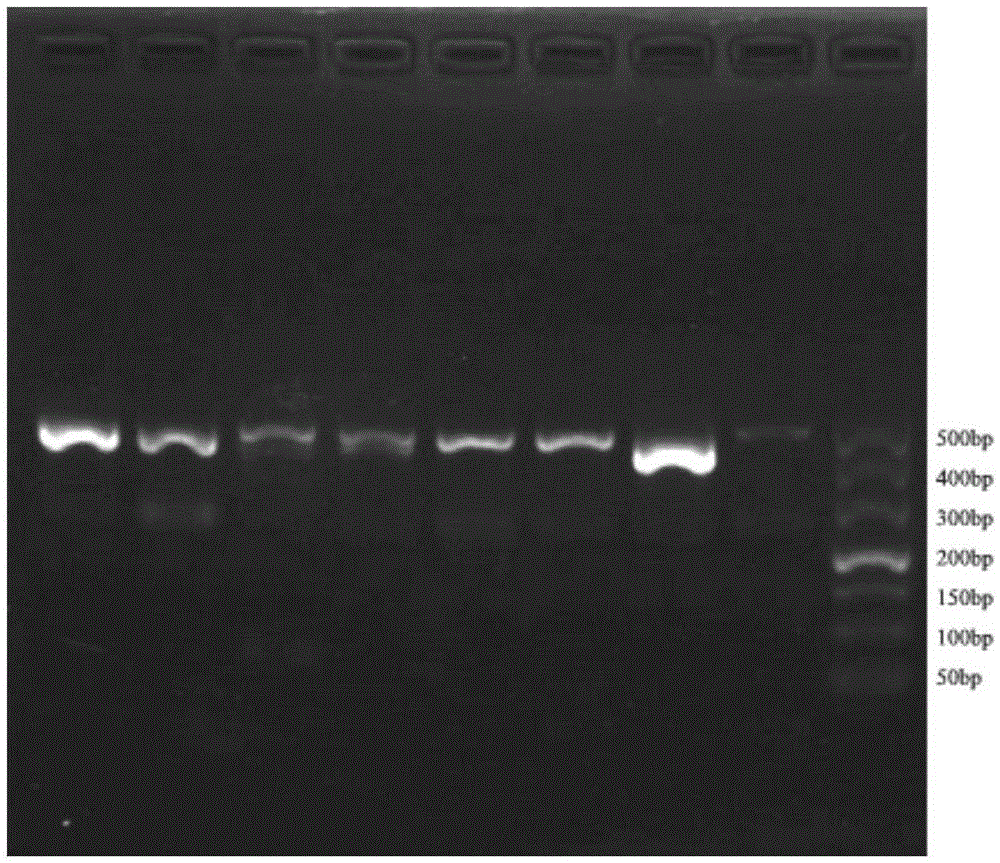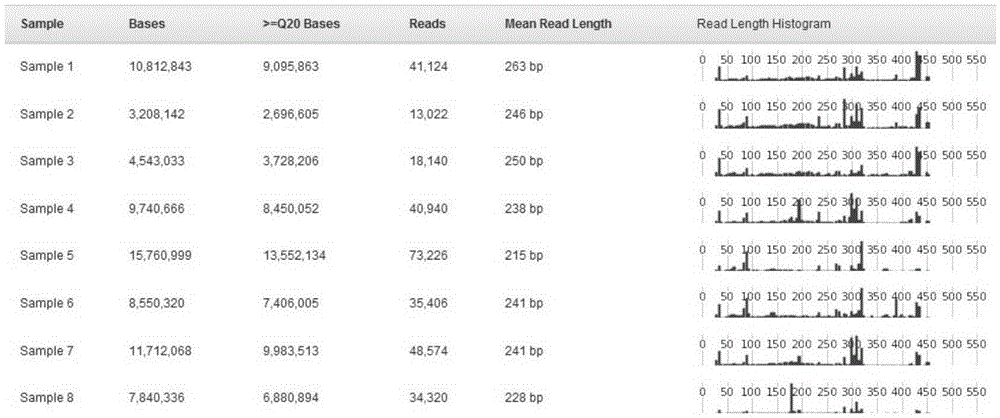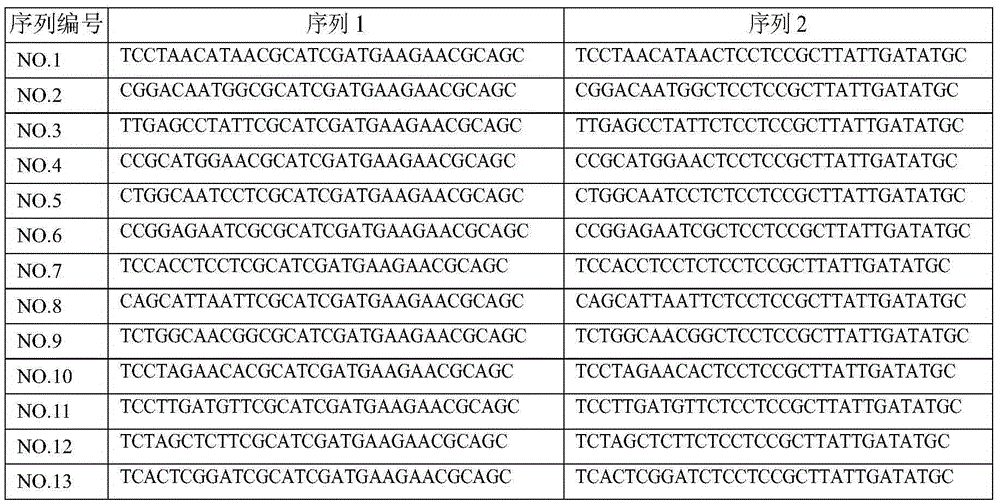Composite tag for high-throughput sequencing of biological diversity of brewing fungi and application of composite tag
A technology of biodiversity and compound tags, which is applied in the field of compound tags for high-throughput sequencing of brewing fungal biodiversity, can solve the problems of great influence and disadvantage on wine quality
- Summary
- Abstract
- Description
- Claims
- Application Information
AI Technical Summary
Problems solved by technology
Method used
Image
Examples
Embodiment 1
[0036] The extraction of the total DNA of environmental samples can refer to the method of Zhou (DNA recovery from soil of diverse composition, Appl. ., 1997, 63, 4993-4995). Or extract according to the method of the soil DNA extraction kit. The main steps are as follows:
[0037] 1. Weigh 5g of the environmental sample into a 50mL centrifuge tube, add 15mL of phosphate buffer, vortex vigorously on the vortex for 5min, then centrifuge at 12500rpm for 10min, discard the supernatant, and grind the precipitate with sterilized quartz sand;
[0038] 2. Add 13.5ml DNA extraction buffer, 100μl 20mg / mL proteinase K, shake at 37°C, 250 rpm for 30 minutes;
[0039] 3. Add 700 microliters of 20% SDS, bathe in 65°C water for 2 hours, shake upside down several times at intervals of 15 minutes;
[0040] 4. Centrifuge at room temperature for 15 minutes at 6000 rpm, collect the middle liquid phase layer; add 5 ml of DNA extraction solution, 300 microliters of 20% SDS to the precipitate, 65 °...
Embodiment 2
[0047] Take 8 samples as an example to implement.
[0048] (1) Number the 8 samples from 1 to 8, select a sequence number from the No.1 to No.96 sequences in Table 1 (such as Table 2) and submit it to a related sequence synthesis company for synthesis; Dilute the synthesized sequences with water to 10 pmol; correlate the sequence numbers in Table 1 to the corresponding sample numbers, as in Table 2.
[0049] Table 2 Correspondence between samples and composite labels
[0050] sample number 1 2 3 4 5 6 7 8 serial number No.1 No.2 No.3 No.4 No.5 No.6 No.7 No.8
[0051] (2) PCR amplification: Take eight 200 μL PCR tubes, each corresponding to a sample, and use sequence 1 and sequence 2 in the sequence number corresponding to the above sample number as primers for PCR amplification. The 50 μL system for PCR amplification contains: according to the DNA concentration of 8 samples, absorb a total of 50 ng of total sample DNA into correspon...
Embodiment 3
[0055] 1. Use a general-purpose PCR product recovery kit to purify the PCR amplification product. The steps are as follows:
[0056] (1) Add 2 times the volume of BindingBuffer to 1 times the volume of the PCR reaction, turn over and mix well.
[0057] (2) Add the above mixture into the DNA purification column, if the volume of the solution is >700μL, transfer the solution in several times; place at room temperature for 1-2min or longer.
[0058] (3) Centrifuge at 13000g for 1 minute. After the centrifugation, transfer the solution in the collection tube to the DNA purification column again, centrifuge, and discard the waste liquid.
[0059] (4) Add 650 μL WashBuffer to the DNA purification column, centrifuge at 13,000 g for 30 seconds, discard the waste liquid, and put the DNA purification column back into the collection tube. Repeat step 4.
[0060] (5) Centrifuge at 13,000g for 3 minutes to remove residual ethanol in the column.
[0061] (6) Put the purification column i...
PUM
 Login to View More
Login to View More Abstract
Description
Claims
Application Information
 Login to View More
Login to View More - R&D
- Intellectual Property
- Life Sciences
- Materials
- Tech Scout
- Unparalleled Data Quality
- Higher Quality Content
- 60% Fewer Hallucinations
Browse by: Latest US Patents, China's latest patents, Technical Efficacy Thesaurus, Application Domain, Technology Topic, Popular Technical Reports.
© 2025 PatSnap. All rights reserved.Legal|Privacy policy|Modern Slavery Act Transparency Statement|Sitemap|About US| Contact US: help@patsnap.com



